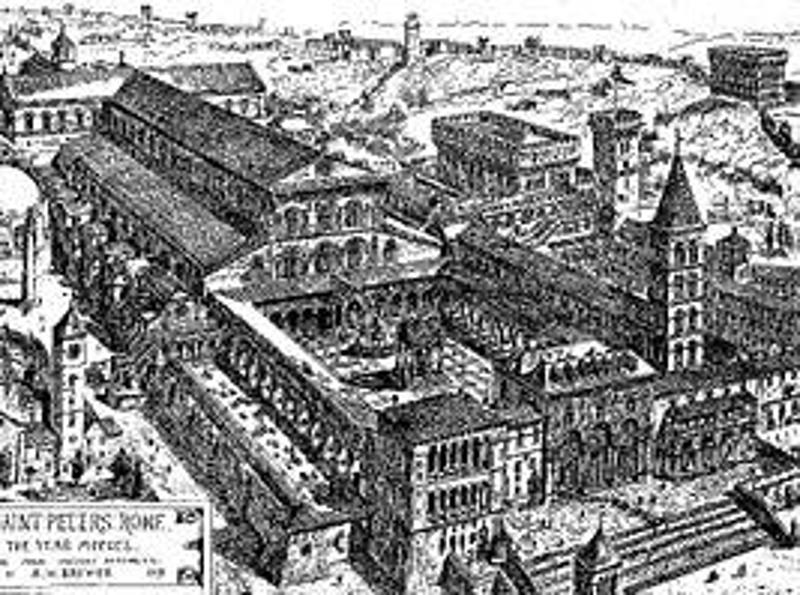Classics 304: Eternal Rome Digital Portfolio
St. Peters Basilica is one of the staples of Rome. Nowadays you can see Michaelangelo’s dome from any overlook in the city and you cant even think Rome without thinking St. Peters. But St. Peter’s hasn’t always been there, especially not in the same way it looks today. It began when Peter himself was buried in the Vatican hill and set the foundation for the location of all the churches that would come after. At first only a red rock marked the placement of Peters grave, but soon after a small altar would be erected to better commemorate the man. Around the fourth century a man named Constantine was the emperor of the Roman empire and he was crucial in the spread of Christianity as he was the one who made the religion legal and government supported. This gave the Christians the ability to be bold about spreading information about Christianity and kickstarted a massive growth spurt in the number of followers. Constantine spearheaded this movement when he decided to build a massive basilica on the spot where St. Peters was buried which we now refer to as “old St. Peter’s Basilica”. This wooden structure slowly became the center of the catholic church and was even where Charlemagne was crowned Holy Roman Emperor. But, over time, the basilica was ravaged by invaders and fires and by the end of the 15th century was delapitating to the point of disrepair. This is when Pope Julius II began the the complete reconstruction process that continued over the next 120 years until they ended at what we see today.
kashford
22 chapters
16 Apr 2020
Chapter Twelve: St. Peters Basilica
St. Peters Basilica is one of the staples of Rome. Nowadays you can see Michaelangelo’s dome from any overlook in the city and you cant even think Rome without thinking St. Peters. But St. Peter’s hasn’t always been there, especially not in the same way it looks today. It began when Peter himself was buried in the Vatican hill and set the foundation for the location of all the churches that would come after. At first only a red rock marked the placement of Peters grave, but soon after a small altar would be erected to better commemorate the man. Around the fourth century a man named Constantine was the emperor of the Roman empire and he was crucial in the spread of Christianity as he was the one who made the religion legal and government supported. This gave the Christians the ability to be bold about spreading information about Christianity and kickstarted a massive growth spurt in the number of followers. Constantine spearheaded this movement when he decided to build a massive basilica on the spot where St. Peters was buried which we now refer to as “old St. Peter’s Basilica”. This wooden structure slowly became the center of the catholic church and was even where Charlemagne was crowned Holy Roman Emperor. But, over time, the basilica was ravaged by invaders and fires and by the end of the 15th century was delapitating to the point of disrepair. This is when Pope Julius II began the the complete reconstruction process that continued over the next 120 years until they ended at what we see today.

1.
Introduction
2.
Chapter One: The Gemini Statues
3.
Chapter 2: The Largo Argentina
4.
Chapter Three: The Temple of Jupiter
5.
Chapter 4: The Via Sacra
6.
Chapter Five: The Colosseo
7.
Chapter 6: Statue of Augustus
8.
Chapter Seven: The Arch of Titus
9.
Chapter 8: Constantine's Basilica
10.
Chapter Nine: The Tiber River
11.
Chapter 10: The Sarcophagi
12.
Chapter 11: Caesars Forum
13.
Chapter Twelve: St. Peters Basilica
14.
Chapter 13: Roman Sewers
15.
Chapter Fourteen: Egyptian Obelisk
16.
Chapter 15: The Pantheon
17.
Chapter Sixteen: Bernini Bridge
18.
Chapter 17: The Wedding Cake
19.
Chapter Eighteen: The Mussolini Window
20.
Chapter 19: Basilica of Saint Lawrence
21.
Chapter 20: The Piazza del Popolo
22.
Conclusion: The more things change